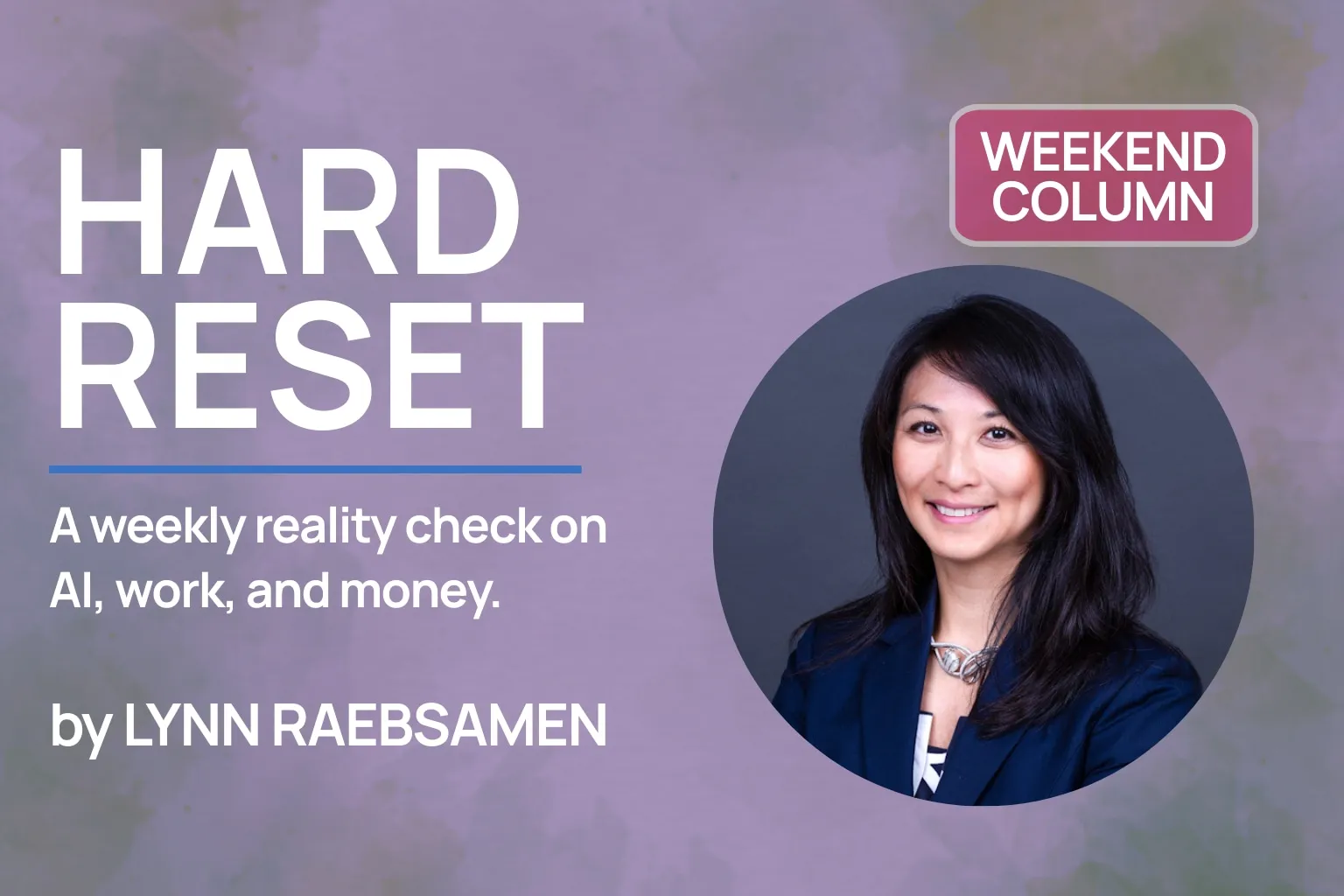The headlines scream with evangelical fervor: Gen Z is abandoning university lecture halls for construction sites, ditching degrees for drill bits as artificial intelligence devours white-collar jobs. The narrative is seductive in its simplicity—young people fleeing to blue-collar refuge as robots colonize the cubicles.
Except the data tells a rather different story.
The AI Scare—Data vs. Dread
While 37% of Gen Z college graduates are indeed pursuing blue-collar careers, the Financial Times analysis of actual employment data reveals something inconvenient for the “AI apocalypse” narrative: there’s precious little evidence that artificial intelligence is systematically obliterating entry-level positions.
Job postings for graduate-level roles have plummeted—down 75% in banking, 65% in software development, and 54% in accounting since 2019. Yet the same dramatic drops occurred in fields supposedly less vulnerable to AI disruption: human resources fell 77%, civil engineering dropped 55%. If AI were truly the culprit, one would expect a clearer pattern of destruction correlating with automation risk.
Instead, MIT’s David Autor concludes it’s “premature to ascribe recent labor market woes to AI”. The real villains? Economic uncertainty, post-pandemic corrections, and good old-fashioned offshoring.
The Real Culprits—Economics, Offshoring, and Overreach
LinkedIn’s chief economist Karin Kimbrough points to the “uncertain macroeconomic environment” as the primary driver. Companies are stepping up offshoring as remote work makes it easier to outsource complex tasks. Meanwhile, the tech sector’s pandemic hiring spree now requires a “natural process of normalisation”.
Most tellingly, Oliver Nash from the Institute for the Future of Work warns against “dramatic headlines about AI’s impact on hiring,” noting that “AI hype can itself become a self-generating problem as people think that ‘this is what other businesses are doing’”.
The data bears this out. Some fields at supposedly high AI risk—like accounting—actually saw youth employment boom. Others, like graphic design and management analysis, lost thousands of young workers, but so did insurance claim assessment and credit counseling—hardly bastions of artificial intelligence deployment.
The University Flood—Can Societies Absorb Mass Higher Education?
Here lies a more fundamental problem. Many advanced economies now funnel 60-85% of their young people toward university qualification. South Korea leads this academic arms race with 85% of students gaining university access, followed by Canada at 75% and Japan at 70%. The UK, Australia, and United States all maintain relatively open university access systems with 65-70% of students eligible.
This represents a dramatic societal experiment: can modern economies actually absorb such concentrations of university graduates into knowledge work?
| Country | University Access Rate (%) | Youth Unemployment Rate (%) | Vocational System Strength |
|---|
| Switzerland | 21 | 3.0 | Very Strong |
| Japan | 70 | 3.9 | Moderate |
| South Korea | 85 | 5.5 | Weak |
| Germany | 50 | 6.0 | Very Strong |
| Austria | 45 | 8.0 | Very Strong |
| United States | 70 | 8.5 | Weak |
| France | 55 | 22.0 | Weak |
| Spain | 60 | 28.5 | Weak |
| Greece | 50 | 25.0 | Weak |
The pattern is eye-catching: countries that maintain selective university access while building strong vocational alternatives consistently achieve superior youth employment outcomes.
Switzerland offers the most compelling counter-narrative. Despite qualifying only 21% of students for university, the country maintains youth unemployment at a remarkable 3%. The remaining 79% who don’t pursue academic tracks aren’t condemned to economic purgatory—they enter the world’s most sophisticated apprenticeship system.
Two-thirds of Swiss students choose vocational education and training, learning from 230 different occupations. Around 25% of apprentices subsequently acquire vocational baccalaureates, opening pathways to universities of applied sciences. This creates genuine alternatives to the university route rather than relegating vocational training to a consolation prize.
The social mobility stories are legendary. Federal Councillor Beat Jans started as a farmer apprentice before becoming an environmental scientist and government minister. Economics Minister Guy Parmelin completed an agricultural apprenticeship before entering politics. These aren’t exceptional cases—they represent a system where technical competence commands genuine respect.
Critically, manual jobs in Switzerland lack the “second-class” stigma plaguing other nations. Apprentices earn while learning—typically 500-1,200 Swiss francs monthly in the first year. Many progress to leadership positions without ever setting foot in a university lecture hall.
The Winds of Change—Rebalancing Ambition
China, recognizing the unsustainability of mass higher education, has been quietly implementing reforms since 2018 to maintain roughly equivalent enrollment between general and vocational high schools—essentially limiting college-bound students to around 50%. The policy aims to produce more technically skilled workers for manufacturing and services.
Meanwhile, Gen Z’s blue-collar migration reflects pragmatic calculation rather than educational failure. They’ve observed that entry-level hiring has slowed, student debt has soared, and many white-collar positions offer little job security. Blue-collar work, by contrast, provides immediate employment, often superior compensation, and relative immunity to both automation and offshoring.
As one 24-year-old entrepreneur put it: “I’m not going to go stop my business and pay for college”. This isn’t anti-intellectualism—it’s economic rationality.
Degrees of Uncertainty, Apprenticeships of Hope
The narrative of AI stealing graduate jobs makes for compelling clickbait, but the reality proves more nuanced. Economic downturn, offshoring, structural overcredentialing, and pandemic aftershocks bear greater responsibility for youth employment challenges than algorithmic automation.
Switzerland’s selective university system suggests a different path: societies that maintain rigorous academic standards while building prestigious vocational alternatives achieve superior youth employment outcomes. When 85% of young people chase university degrees—as in South Korea—youth unemployment rises despite seemingly high educational attainment.
As more Gen Z workers discover that success doesn’t require a university credential, perhaps the world’s obsession with mass higher education will finally face some healthy skepticism. After all, tomorrow’s innovators might well be wielding wrenches rather than wielding Word documents—and earning more while doing it.
Hard Reset – Author Slug: Lynn Raebsamen
About the columnist
Lynn Raebsamen
European Editor · Implicator.ai
Technologist with financial expertise (CFA). Author of Artificial Stupelligence: The Hilarious Truth About AI.
A hype-skeptic who believes in technology that actually works. Based in Switzerland—and still waiting for an AI that
can finally perfect snow forecasts.
Want more of Lynn’s take on what AI can—and can’t—do?









